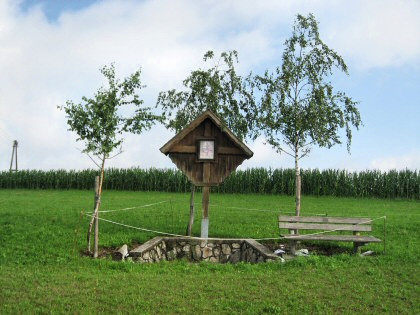
From the Jakobskirche (church of St. James) in Neustadtl, the path first goes downhill, past this way cross towards Kollmitzberg, which can soon be seen in the distance. We follow the yellow arrows with the inscription
österreichischer Jakobsweg, Abschnitt Mostviertel
Austrian Way of St. James, section Mostviertel
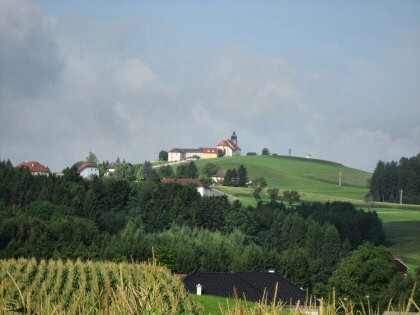
After one hour the church of Kollmitzsberg is well seen, the ascent to the "mountain" begins.

Then we are at the church dedicated to St. Ottilie. From the cemetery you have a wonderful panoramic view of the Alps.


The Ottilien fountain helps against eye problems. I don't know if you have to drink the water or rub your eyes to get it to help.
There is a Nepomuk window in the church and of course St. Ottilie is omnipresent.
We continue in a westerly direction. Here a view of the Danube valley.

Vreni marches exhilarated downhill.
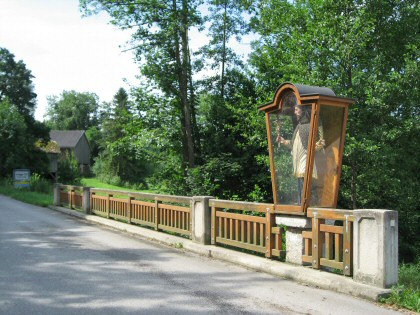
Soon the monastery of Ardagger is reached. The path leads over a bridge with a Nepomuk ...

... up to the monastery, where we are also greeted by a nepomuk.
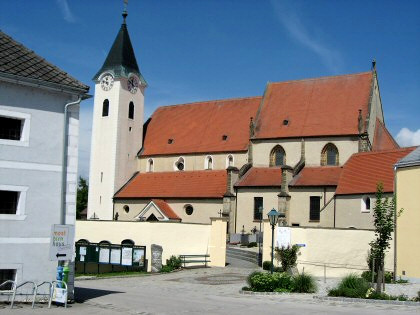
The Ardagger abbey was founded in 1049 by Emperor Henry III and his wife Agnes of Poitou. It is the same Henry III who survived the collapse of the floor of the hall in the Persenbeug Castle in 1045 into the bathing room below.
During a hunt here the empress gave birth to a daughter (Mathilde). The happy birth is said to have been the reason for the foundation of the monastery.
The bishop of Freising was given the task of establishing a spiritual community here in honour of St. Margaret. Thus a three-nave pillar basilica was built, which was consecrated in 1063.
On the left of the picture you can still see a part of the medieval granary, which today houses a museum.
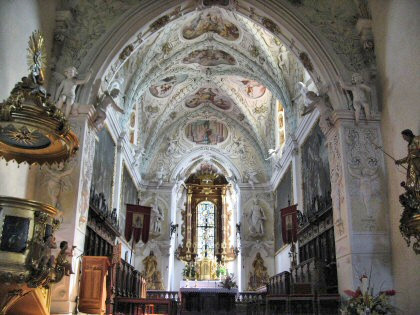
A view into the interior of the church. In the background the famous Margaret window, created around 1234, depicting scenes from the life of St. Margaret.
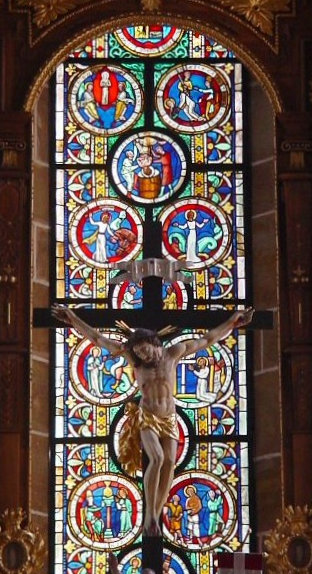

Of course I am happy about another Nepomuk.
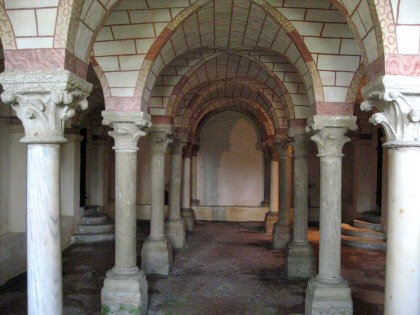
The Romanesque crypt.

After a well-deserved lunch break, the trail leads uphill once again to Pfaffenberg. We pass some wayside shrines. Clouds are coming up!
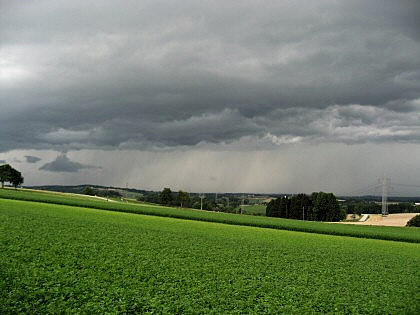
The clouds are becoming more threatening. In the space above the Danube it flashes and thunders quite violently. There is a strong wind coming up also with us. The storm is imminent. Vreni flees to a farm, where Anna is our guardian angel. She saves us from the storm and rain and even takes us to Zeillern by car (4km).

The rain was extremely heavy and we were happy about the pilgrims' hostel in Gasthof Schlossinsel in Zeillern.
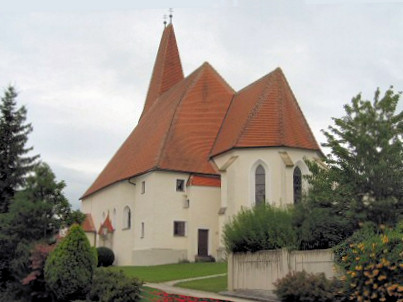
After the rain we visit the church of St. James.
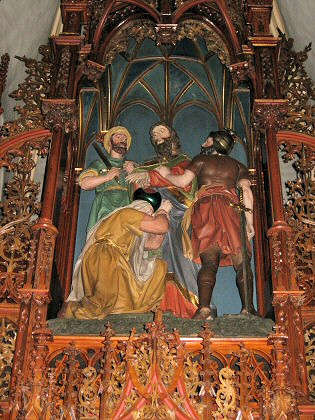
On the high altar there is a scene of James, condemned to death, laying hands on the converted priest Abiathar on the way to the place of judgment in Jerusalem.
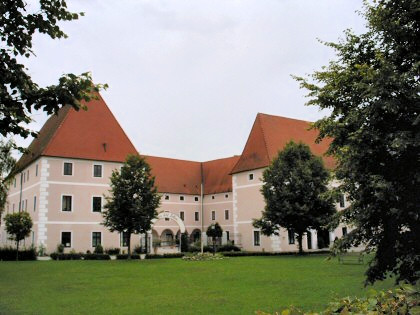
In Zeillern Castle, which is largely a hotel, there is a lot of music and singing. A music week is currently taking place.
Empress Maria Theresa decreed the planting of fruit trees along country and district roads in 1763. The importance of cider production reached its peak in the 19th century. Yards surrounded by 1000 or more fruit trees are not uncommon.
The first expert on cider known by name was Philipp Jakob von Grünthalern, lord of the castle in Zeillern around 1600, who praised Cider in his "Haushaltsungsbüchel für junge Eheleute" (household book for young married couples)

